The two most common diseases affecting pear trees in California are fire blight and pear scab. Blossom blast and oak root fungus also occur in some pear orchards, but are limited geographically.
Fire blight, caused by the bacterium Erwinia amylovora, is most common in the Delta Region of California. The bacteria overwinter in pear trees in “holdover cankers”. In the spring infected trees have dead flower clusters and shoots, along with oozing in young tissues. Pear trees are susceptible to fire blight infection in open flowers during bloom. Fire blight susceptibility persists longer into the season in Bartlett and Starkrimson cultivars due to their extended bloom period. The disease is prevented primarily by the use of bactericide sprays that contain copper, spreptomycin or terramycin. Infected plant parts are periodically cut well below the infection zone. Cuttings should be removed and burned to prevent bacterial spores from spreading throughout the tree and orchard (UC IPM website, 2013).
Pear scab, caused by the fungus Venturia pirina (Aderh.), is most common during the early growing season in the North Coast region and occasionally in the Sacramento River district. The fungus can affect several parts of the tree, including blossoms, leaves, fruit and young twigs. Early infections cause scab-like lesions on the fruit and can alter fruit shape. Fungicides are typically used during high humidity conditions to prevent the growth and spread of pear scab (UC IPM website, 2013; Gubler et al., 2007).
For detailed information, including the Year-round IPM Program for pear, and University of California's official guidelines for pest monitoring techniques, pesticides, and nonpesticide alternatives for managing pests, see the UC Statewide IPM Program: How to Manage Pests: Pears
Pear Photo Gallery
These photos are accessed from the UC ANR Repository, are available courtesy of University of California research and extension personnel and programs, including the UC Statewide IPM Project.
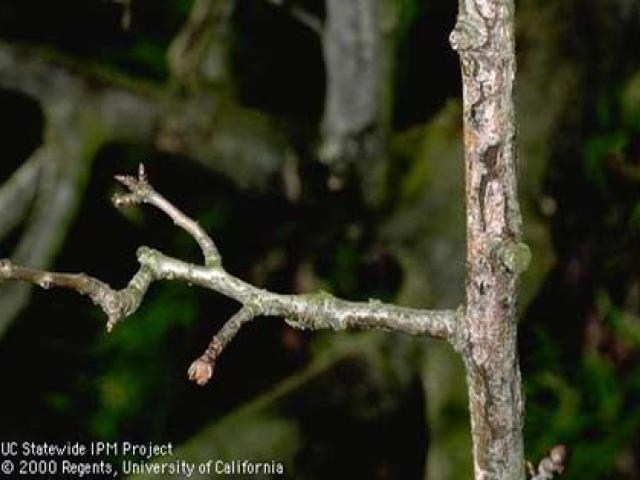
|
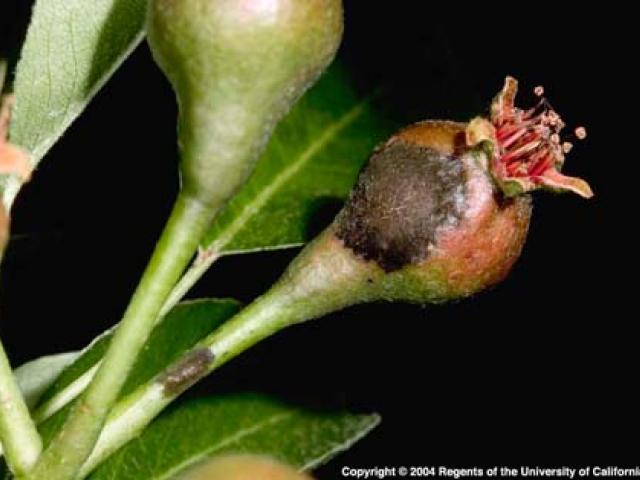
|
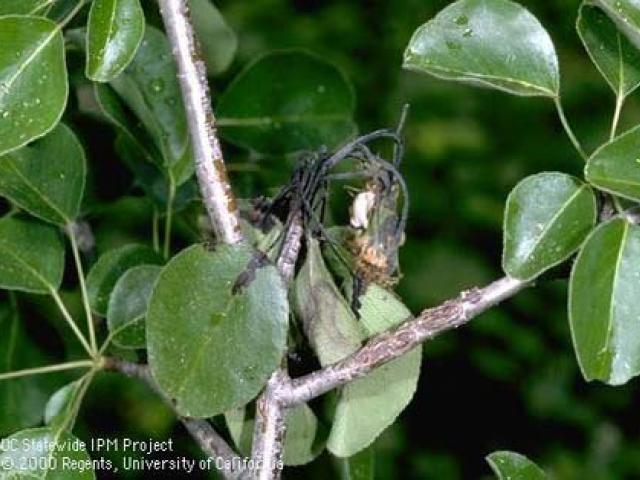
|
|---|---|---|
| Papery bark and dead blossom buds on pear caused by bacterial blast. | Pear scab lesions. | Pear cv. Buena Hardy. |
| Photo by JKClark, UC Statewide IPM Project © UC Regents | Photo by JKClark, UC Statewide IPM Project © UC Regents | Photo by JKClark, UC Statewide IPM Project © UC Regents |
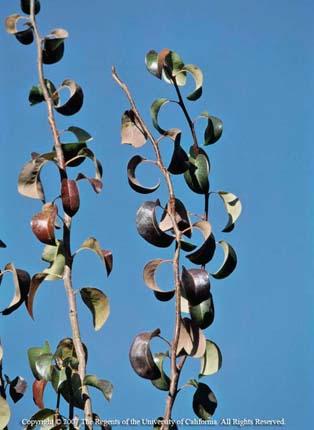
|
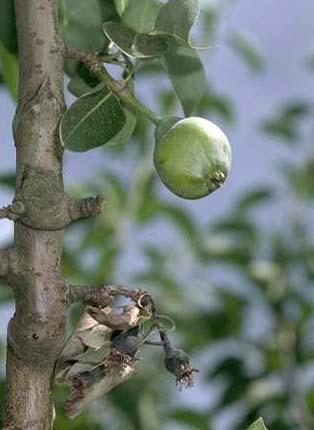
|
|
| Pear decline. | Flower clusters infected with fire blight bacteria. | |
| Photo by JKClark, UC Statewide IPM Project © UC Regents | Photo by JKClark, UC Statewide IPM Project © UC Regents | |
